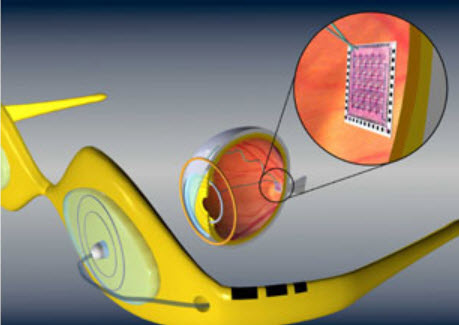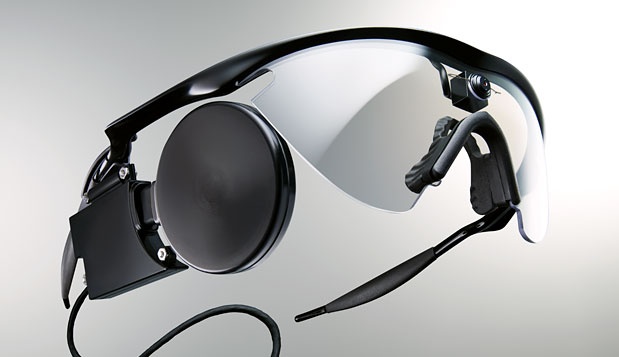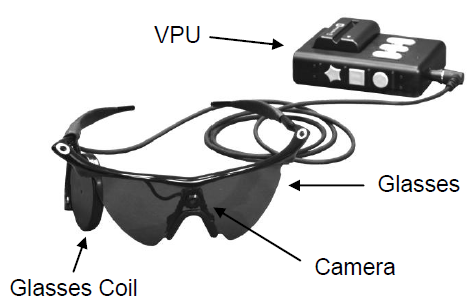
Artificial
retina device, consisting of a glasses-mounted camera and a microchip
surgically implanted on the retina (credit: Dr. Wentai Liu)

Argus II (credit: Second Sight)
Argus II is first approved ocular prosthesis to restore limited vision to those blinded by retinitis pigmentosa
The FDA approval currently applies to individuals who have lost sight as a result of severe to profound retinitis pigmentosa
(RP), an ailment that affects one in every 4,000 Americans. The implant
allows some individuals with RP, who are completely blind, to locate
objects, detect movement, improve orientation and mobility skills and
discern shapes such as large letters.In an historic move, the U.S. Food and Drug Administration (FDA) has granted market approval to an artificial retina technology, the first bionic eye to be approved for patients in the U.S.
The device, called the Argus II Retinal Prosthesis System, from Second Sight Medical Products, transmits images from a small, eye-glass-mounted camera wirelessly to a microelectrode array implanted on a patient’s damaged retina. The array sends electrical signals via the optic nerve, and the brain interprets a visual image.
How it works

Argus II components (credit: FDA)
An external camera system, built into a pair of glasses, streams video to a belt-worn computer, which converts the video into stimulus commands for the implant.
The belt-worn video processing unit (computer) encodes the commands into a wireless signal that is transmitted to the implant, which has the necessary electronics to receive and decode both wireless power and data.
Based on those data, the implant stimulates the retina with small electrical pulses. The electronics are hermetically packaged and the electrical stimulus is delivered to the retina via a microelectrode array.
In 1998, Robert Greenberg founded Second Sight to develop the technology for the marketplace. While under development, the Argus I and Argus II systems have won wide recognition.
This ocular prosthesis technology has received early and continuing support from the National Science Foundation (NSF), the National Institutes of Health and the Department of Energy, with grants totaling more than $100 million. The private sector’s support nearly matched that of the federal government.
The NSF BMES ERC also developed a prototype system with an array of more than 15 times as many electrodes and an ultra-miniature video camera that can be implanted in the eye. However, this prototype is many years away from being available for patient use.
Article courtesy of Kurzweil.Ai

No comments:
Post a Comment